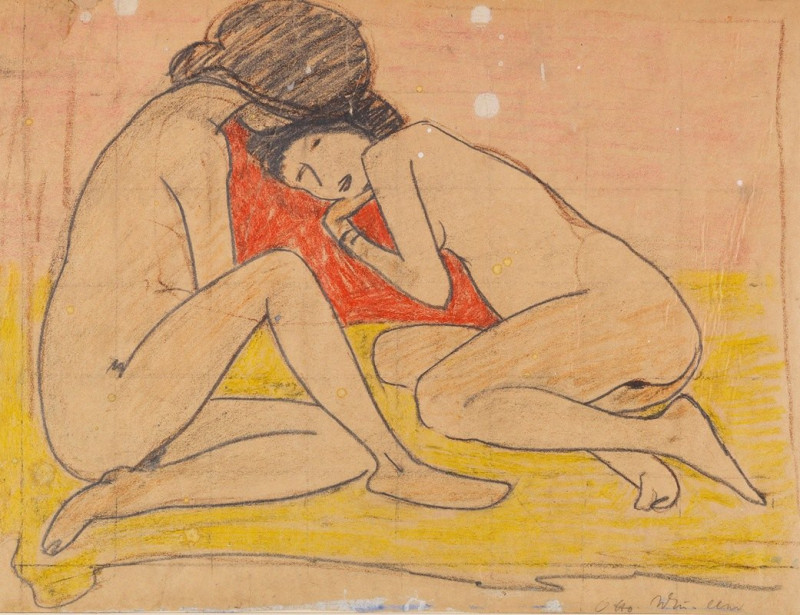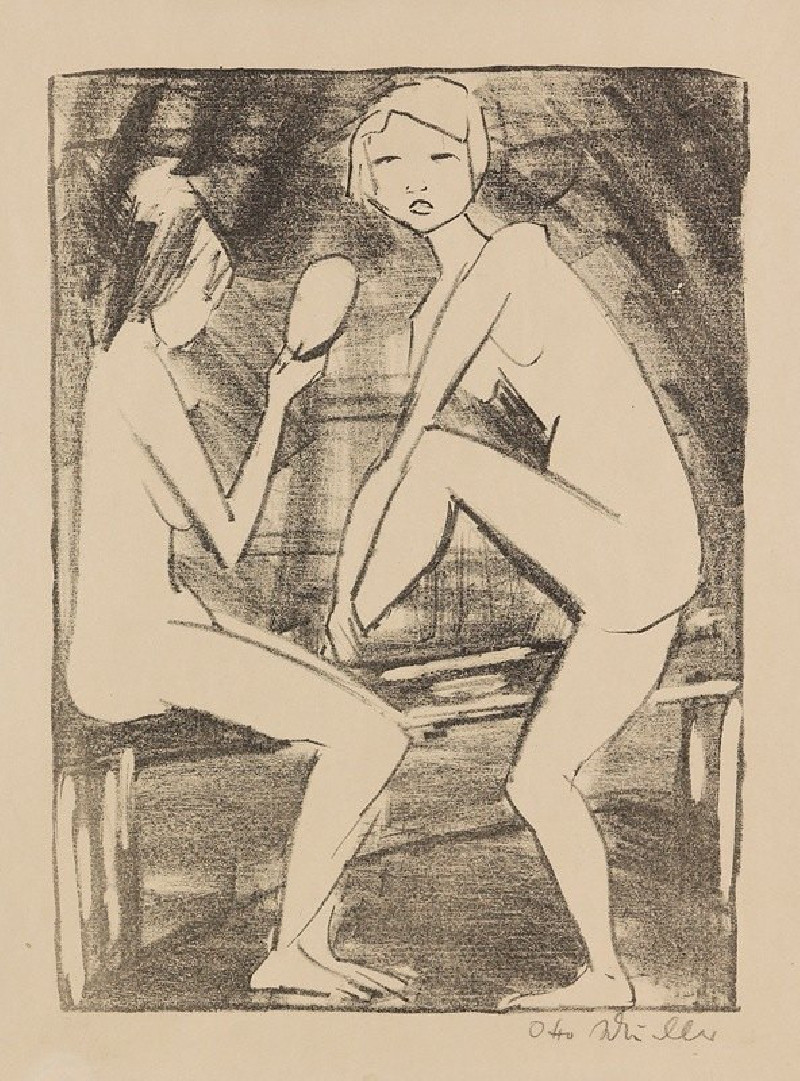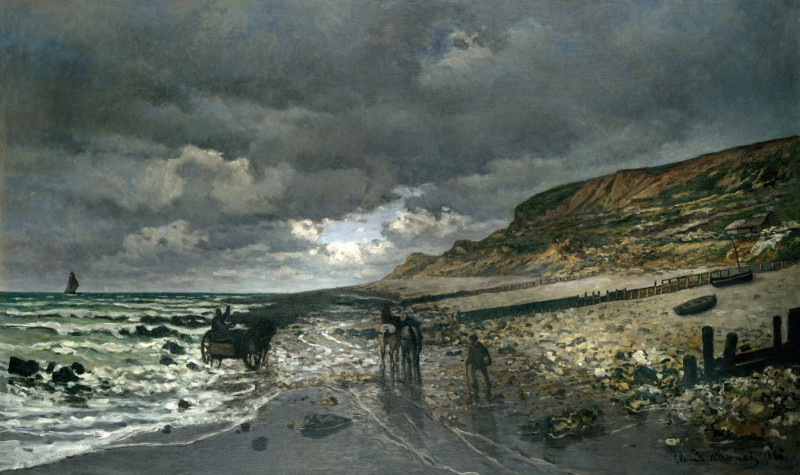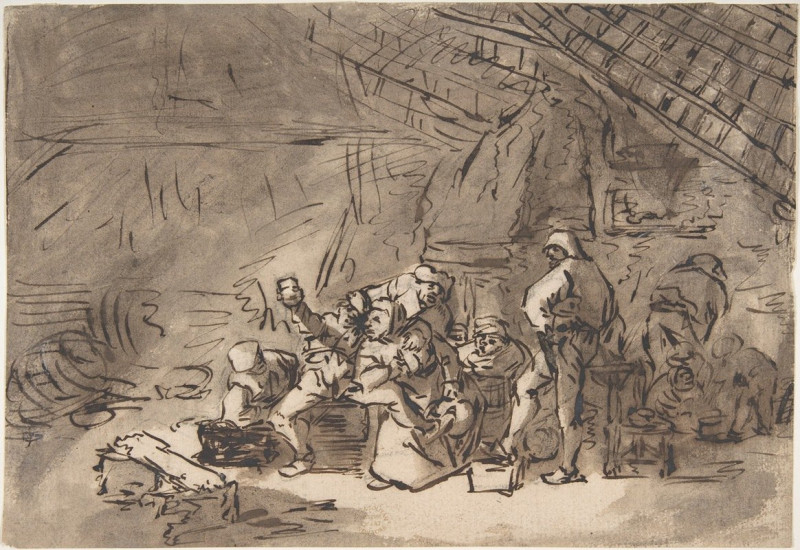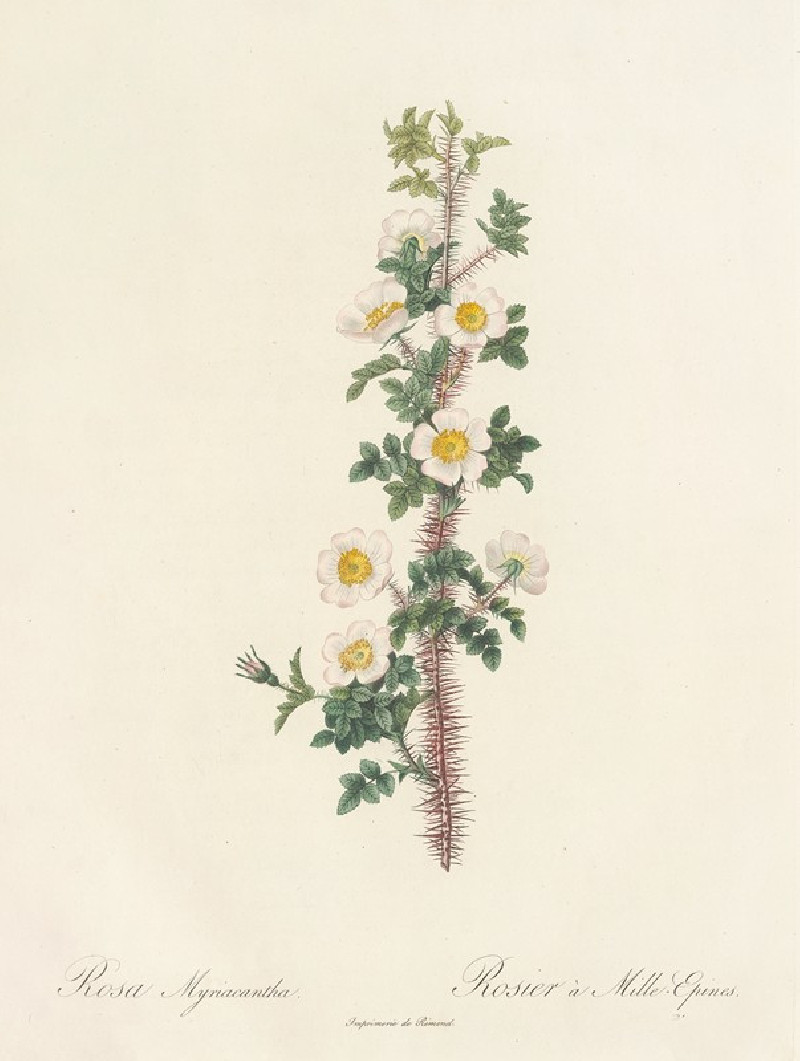Sitzendes und zwei liegende Mädchen im Gras (Drei Akte) (1922-1926)
Technique: Giclée quality print
Recommended by our customers
More about this artwork
"Sitzendes und zwei liegende Mädchen im Gras (Drei Akte)" by Otto Mueller, created between 1922 and 1926, stands out as an evocative example of the Expressionist movement. This lithograph portrays a serene yet vivid scene in which three figures—two reclining and one seated—are depicted amidst a backdrop of thickly delineated grasses. The stark contrasts, achieved through the use of bold black and white, enhance the dynamic compositions and emphasize the natural, uninhibited forms of the figures.Mueller’s work is known for its intimate connection with nature, and this piece is no exception. The figures meld with the landscape, suggesting a deep symbiosis between human and nature. The portrayal of the figures is both simplified and expressive, capturing an essence of tranquility and unity submerged in the natural world.This artwork draws the viewer into a contemplative space, inviting reflections on beauty, nature, and the human form untethered by the constraints of society.
Delivery
Returns
Otto Müller was a German painter and printmaker of the Die Brücke expressionist movement.
Mueller was born in Liebau (now Lubawka, Kamienna Góra County), Kreis Landeshut, Silesia. Between 1890 and 1892 he was trained in lithography in Görlitz and Breslau. From 1894 to 1896 he studied at the Academy of Fine Arts in Dresden and continued his study in Munich during 1898. He left Munich's academy after Franz von Stuck classified him as untalented.








